Clear and concise, The Handbook of Structured Life Review synthesizes 30 years of research and practice using the Structured Life Review process. Structured Life Review is a one-on-one therapeutic technique that guides people in reflecting on their lives from early childhood to the present. This approach allows individuals to learn from past experiences, settle unresolved issues, and ultimately achieve a state of life acceptance. Participants benefit from increased life satisfaction, reduced depression, and the opportunity for reconciliation, acceptance, and serenity.
Following this user-friendly handbook, Structured Life Review sessions can be easily led by professionals and nonprofessionals alike: social workers, counselors, activity staff, or even volunteers. The book thoroughly explains the role of the Therapeutic Listener and describes useful counseling and communication techniques. Step-by-step goals, instructions, and sample dialogue for eight separate sessions provide the blueprint for conducting life reviews. Handy appendices include assessment tools and a Life Review Form with recommended questions for each session.
Structured Life Review is appropriate for people of all ages, including older adults in senior centers, assisted living facilities, skilled nursing centers, and home settings. The approach is especially beneficial for individuals experiencing stress, undergoing major change, or coping with grief or a traumatic event. Additionally, Structured Life Review not only fulfills current requirements for meaningful activities but meets the criteria for short-term therapy covered by Medicare and other insurance providers.
Format: E-book
e-ISBN 978-1-938870-80-4
E-book available through:
Also available through: Bowker, Baker and Taylor, OverDrive, Gardners, Follett
 Barbara K. Haight, Dr.P.H., is Professor Emeritus at the College of Nursing, Medical University of South Carolina. Now retired, Barbara conducted 8 research projects over 25 years developing the structured life review process and supervised numerous students and colleagues in the practice of life review. She was the first president of the International Life Review and Reminiscing Society and has conducted hands-on life review projects in the United States, England, Japan, and most recently Northern Ireland. She is co-editor of two books on reminiscing and life review, plus one on group process, and is widely published in the field of life review and gerontology.
Barbara K. Haight, Dr.P.H., is Professor Emeritus at the College of Nursing, Medical University of South Carolina. Now retired, Barbara conducted 8 research projects over 25 years developing the structured life review process and supervised numerous students and colleagues in the practice of life review. She was the first president of the International Life Review and Reminiscing Society and has conducted hands-on life review projects in the United States, England, Japan, and most recently Northern Ireland. She is co-editor of two books on reminiscing and life review, plus one on group process, and is widely published in the field of life review and gerontology.
Barbara is a fellow emeritus in the Gerontological Society of America where she founded and conducted a special interest group on reminiscence. She is also a Fellow in the American Academy of Nursing, and in the Florence Nightingale Society.
 Barrett S. Haight, J.D., retired as a Colonel from the U.S. Army after serving 23 years in a variety of positions throughout the world. Subsequently, he served as Director of Estate Planning for The Citadel Development Foundation (Charleston, SC) for 17 years. Throughout both periods, he taught undergraduate courses in health care law at the Medical University of South Carolina. COL Haight has authored articles for the Dickinson Law Review and the U.S. Army Command and General Staff College. Additionally, he edited Focus, the newsletter of The Citadel Development Foundation. In his second retirement, he co-authored an article on reminiscence for the Encyclopedia of Gerontology and served as editor for many health care submissions.
Barrett S. Haight, J.D., retired as a Colonel from the U.S. Army after serving 23 years in a variety of positions throughout the world. Subsequently, he served as Director of Estate Planning for The Citadel Development Foundation (Charleston, SC) for 17 years. Throughout both periods, he taught undergraduate courses in health care law at the Medical University of South Carolina. COL Haight has authored articles for the Dickinson Law Review and the U.S. Army Command and General Staff College. Additionally, he edited Focus, the newsletter of The Citadel Development Foundation. In his second retirement, he co-authored an article on reminiscence for the Encyclopedia of Gerontology and served as editor for many health care submissions.

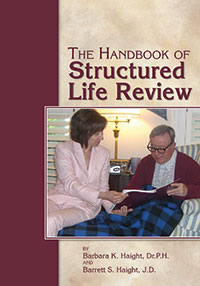
 Barbara K. Haight, Dr.P.H., is Professor Emeritus at the College of Nursing, Medical University of South Carolina. Now retired, Barbara conducted 8 research projects over 25 years developing the structured life review process and supervised numerous students and colleagues in the practice of life review. She was the first president of the International Life Review and Reminiscing Society and has conducted hands-on life review projects in the United States, England, Japan, and most recently Northern Ireland. She is co-editor of two books on reminiscing and life review, plus one on group process, and is widely published in the field of life review and gerontology.
Barbara K. Haight, Dr.P.H., is Professor Emeritus at the College of Nursing, Medical University of South Carolina. Now retired, Barbara conducted 8 research projects over 25 years developing the structured life review process and supervised numerous students and colleagues in the practice of life review. She was the first president of the International Life Review and Reminiscing Society and has conducted hands-on life review projects in the United States, England, Japan, and most recently Northern Ireland. She is co-editor of two books on reminiscing and life review, plus one on group process, and is widely published in the field of life review and gerontology.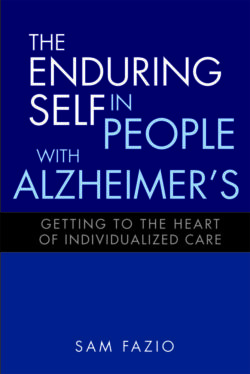
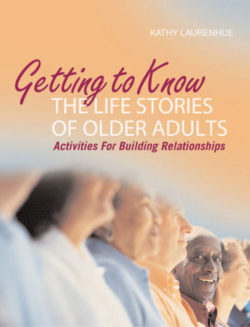
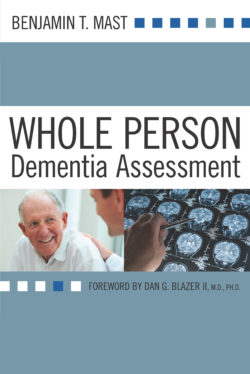
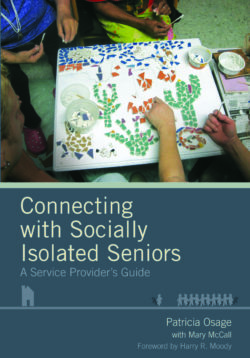
admin –
“A terrific book – the best I’ve seen that captures the essence of life review.”
-Robert N. Butler, M.D., President and CEO, International Longevity Center-USA
admin –
“Clearly written, comprehensive in scope, evidence-based and useful for both health professionals and the lay public … an essential guide for anyone interested in the Structured Life Review, recognized as a rewarding tool to help others review and evaluate their life journey.”
-Jean D’Meza Leuner, Ph.D., R.N., C.N.E., Professor and Dean, College of Nursing, University of Central Florida
admin –
“Life stories not only provide windows on the past, they open doors to the improvement of lives.… this book brings much experience to guide those who are in a position to assist older adults to improve their lives [with Structured Life Review]… excellent vignettes from real lives with real problems help train the therapeutic listener.”
-James E. Birren, Ph.D., Dean Emeritus, Andrus Gerontology Center, University of Southern California
admin –
“This thorough book … reflects decades of author experience with the life review process through the use of real-life, non-sugar-coated examples. It provides an up-to-date and essential training tool that promotes ethical and consistent methodological approaches for incorporation in life review research and practice.”
-John A. Kunz, M.S., Founder and Manager, International Institute for Reminiscence and Life Review, Center for Continuing Education/Extension, University of Wisconsin – Superior
admin –
“This is a long awaited text, the first handbook on conducting Structured Life Review and written by the major pioneer in this field.”
-Peter G. Coleman PhD, Professor of Psychogerontology, University of Southampton, England, UK
admin –
“An extremely readable and practical guide … rich with examples from years of research on the use of life review, the authors demonstrate that this process can be rewarding not only for the listener but also the individual reflecting on and evaluating the lived experience.”
-Barbara J. Edlund, R.N., Ph.D., A.N.P.-B.C., Professor College of Nursing, Medical University of South Carolin
admin –
“The principles of this life review process would uniquely apply to the end-of-life character of hospice care … the prevailing characteristic of hospice is to administer palliative care and comfort to the patient in the remaining few weeks and days of his life. [The Structured Life Review process can] help the patient face the reality of his or her pending demise and oftentimes, in doing so, help guide the patient to achieve ‘closure’ on certain troublesome and unresolved concerns.… [This book] will undoubtedly benefit many.”
-Dean J. Patenaude, M.B.A., Past President and Former Board Member, Treasure Cove Hospice, Stuart, Florida